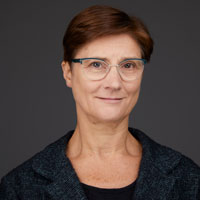|
Karen J. Souter, MB, BS, FRCA, MACM |
Diversity in Anesthesiology
The SEA 2019 Spring Meeting in Denver explored the theme of “Integration and Diversity: Creating Diverse Teams, Building Exceptional Leaders”. The co-chairs of this meeting, Dr. Libby Ellinas and Dr. Herodotos Ellinas crafted an outstanding program, which brought together accomplished speakers who addressed many aspects of diversity within anesthesia. In this article I reflect on three themes: our specialty’s lack of diversity and its impact on patient care; evidenced-based actions we can take; and how we can ensure that we are respectful and inclusive toward all learners. My hope is that these reflections and embedded questions inspire thought and action to spur our society to “create diverse teams and build exceptional leaders” in anesthesia education.
1. Academic healthcare and anesthesiology lack diversity, even though representation matters to a diverse patient population.
In her opening keynote address, Dr. Ramona Tenorio provided a powerful demonstration by leading us down a hallway in her institution – a hallway that exists in all our institutions (you can easily do this exercise at your home base if you missed the meeting). She asked us to look at the photographs of the graduating classes from the last 50 to 100 years, and she drew our attention to the lack of diversity, which is only recently beginning to change. She went on to describe the existing underrepresentation of white female faculty, and the increasing underrepresentation of racial and ethnic minorities in anesthesiology. Dr. Renee Chapman Navarro, in the second keynote presentation, echoed and elaborated on this theme. She described the sundry dimensions of diversity and compared them to an iceberg: although some aspects are visible, most are not. In their panel discussion Dr. Cynthia Wong, Dr. Cynthia Lien, and Dr. Vesna Jevtovic-Todorovic presented data demonstrating that women anesthesiologists have neither equality nor equity in terms of representation in academic leadership positions and in compensation. Dr. Wong underscored the power of data to drive change. All the speakers challenged us to collect data to demonstrate lack of diversity in anesthesiology. We should then leverage this data to challenge outdated, non-inclusive hierarchies and to increase diversity and inclusion within our departments and institutions.
- How can we at the SEA be intentional about gathering data on diversity and inclusion as they relate to anesthesiology and education?
- Which specific data do we need to collect to add to the existing information on diversity in anesthesiology?
2. Evidence should guide our strategy and action to build diversity in our institutions.
Dr. Tenorio introduced the concept of cultural humility, “a practice of interest and care about culture from a place of humility”. A cultural competency approach assumes that we can be totally culturally competent after a few classes or a course. Cultural humility, on the other hand, teaches us that we can never fully understand another’s experience, and that our learning and engagement are part of daily, ongoing practice. This is a powerful distinction and an important one for educators at all levels.
Dr. Navarro emphasized the importance of unconscious biases and how these affect our daily interactions, our student evaluations, our hiring practices, and the selection of our leaders. She challenged us to learn about our own unconscious biases using the Implicit Association Test. Her invitation to undertake diversity training and education should be second nature to us as educators. And we educators are well placed to mentor individuals from underrepresented groups in our specialty.
Dr. Navarro highlighted the Accreditation Council for Graduate Medical Education’s requirements aimed at systematically recruiting and retaining “a diverse and inclusive workforce of residents, fellows, …[and] faculty members…” These policies are an important starting place as we develop policies to increase diversity within our residency and fellowship programs.
Many speakers on the program identified practical strategies that departments and institutions can use for building resident and faculty diversity. These include elective scholarship programs for underrepresented minority medical students, active outreach initiatives, and recruitment strategies aimed at the residents and faculty. The speakers all stressed the importance of accountability at the level of department chair and dean.
- What opportunities exist for SEA to lead in the development of educational policies, initiatives, and strategies necessary to increase and sustain diversity in our training programs?
3. We must demonstrate respect and inclusion of all learners.
In his keynote presentation, Dr. Jesse Ehrenfeld described educational initiatives aimed at eliminating health disparities for sexual orientation and gender minority groups. He described the American Medical Association’s graduate medical education competency education program, a great example of an online educational tool for residency programs to use to supplement LGBTQ education for residents.
- How can the SEA bring our expertise in developing educational tools to these initiatives?
In a panel discussion Dr. Lois Connolly, Dr. Laura Bonanno, and Dr. Katherine Monroe discussed incorporating advanced practice providers and nurse anesthetists into the educational environment. The speakers discussed the benefits of a diverse educational environment within anesthesiology training programs, as well as how to overcome some of the barriers.
- The practice of anesthesiology has evolved into a multi-provider, team-based discipline. How can we as anesthesiology educators work to create nurturing and inclusive learning environments that serve the needs of our patients our learners while furthering our institutions’ missions?
At our meeting in Denver we were fortunate to have incredible speakers who presented powerful messages with many practical suggestions on how to make them realities. Participants benefited from a safe environment in which opposing views were expressed in healthy and respectful ways. We were able to have challenging conversations and learn from them. I hope these conversations continue to evolve, and I welcome any comments and suggestions sparked by these reflections.
I look forward to seeing you soon at our 2019 Fall Meeting in Chicago on Thursday, November 7th (the day before the SAAAPM meeting).



